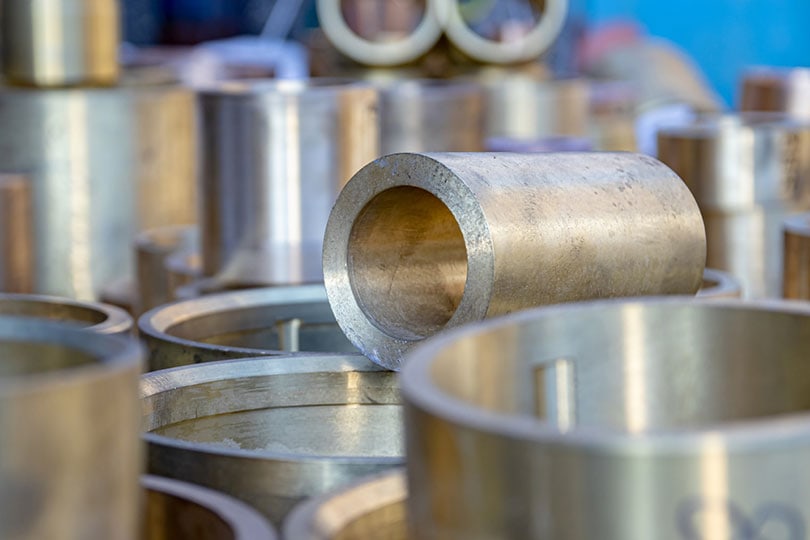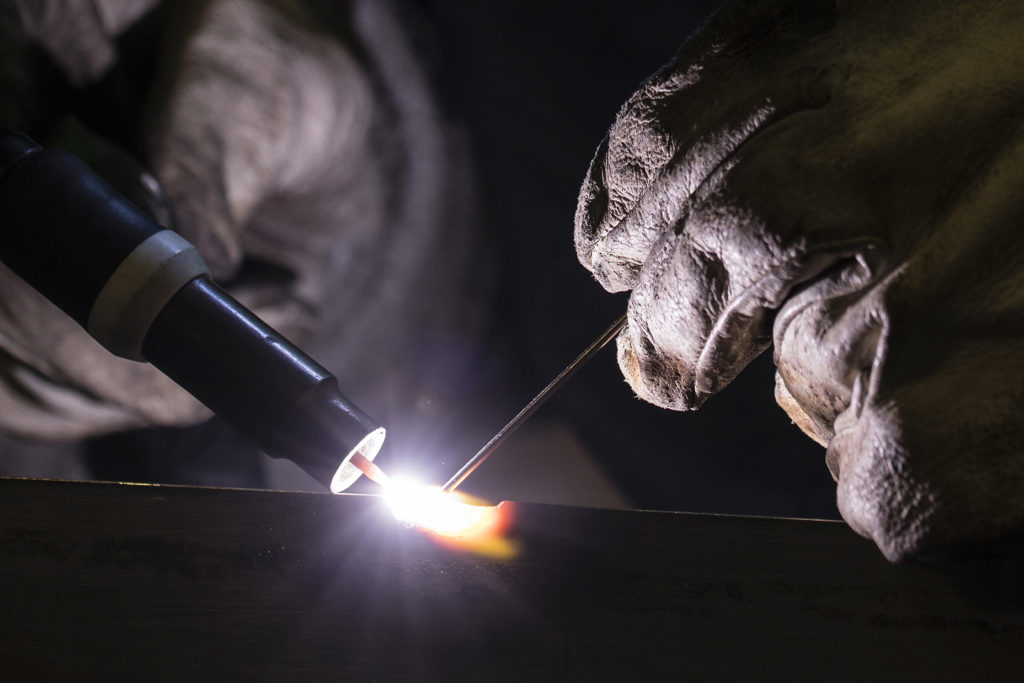Can you Weld Pot Metal? What You Need to Know!
Last Updated on

Pot metal mainly refers to types of metal that are made from several inexpensive metals. They are also referred to as die-cast Zinc or monkey metal. These originated from non-ferrous metals which were melted into a pot for casting. The pot metals can be welded, although the process may be a bit difficult.
Due to the variety of composition pot metals come in, it may be a tricky subject when it comes to welding them. Different metals have varying melting points and different qualities, which influence how to go about welding them. This is difficult in the case of pot metals given its composition.
In this article, we will look at how to weld a pot metal and take an all-round look at what it takes to ensure you get the best outcome in case you venture into welding it.
Pot Metal Composition
Pot metals can be traced back before the 19th century, when they were usually made from a mixture of copper and lead, with smaller amounts of other metals such as cadmium, zinc, tin, antimony, magnesium, and aluminum. Modern pot metals usually comprise zinc, primarily with several other metals with nonspecific formulae.
Before the invention and takeover of plastics, pot metals were the original plastic. They were cheap and readily available, similar to plastics today. However, even with the increased use of plastic in the modern world, pot metals still have their place, especially in areas where plastic proves impractical for the job.
- Cookie cutters
- Toy boxes
- Certain toys
- Cheap furniture fittings
- Electronics and accessories
- Locknuts on kitchen sinks
https://www.instagram.com/p/CCJV109F8UV/
About Pot Metals
Pot metals can be considered a form of recycling, which often happens in factories but can also occur in smaller scale workshops or even at home. All non-ferrous metals not in use around the shop or factory are collected and melted down for casting parts.
Iron can also be added to the mix in small quantities, but larger amounts are discouraged as they may raise the melting point of the collected metals, making them harder to work with. For this reason, lower melting point metals are usually preferred.
The primary reason there is little care as to the kind of composition for the pot metal is that mixtures of metals tend to melt at lower temperatures than pure metals. For people familiar with soldering, solders melt at lower points than the copper or tin you are most likely soldering to. Also, the solder will not melt copper, but the solder itself will melt, as copper is pure and solder is more of a combination of elements.
Welding Pot Metal
One of the best methods for welding a pot metal is TIG welding, which will require proper know-how before you do the job. You should also have the right equipment for the job. As an added advantage, the know-how of working with aluminum will come in handy.
For the equipment, the best option is an A/C TIG welder, which features a high-frequency start. For the amps setting, the machine should be set at 80 max to ensure the die-cast zinc has an attractive appearance and maximum strength.
It will be extremely important to ensure you use low-temperature settings and weld the pot metal slowly for best results. You should use HTS-2000 filler rods, Alladin or Durafix.
Also, ensure you work on the pot metal in five to ten seconds intervals. This allows for cooling in between welding, which will result in a superb finish. If it starts to flow, stop welding immediately to ensure you don’t ruin the project.
Although pot metal welding is considered a difficult job, it is far more cost effective.
To get the best results while welding pot metals, you need to have a lot of time on your hands and sufficient skills for the work. The fact that different pot metals come with different metal compositions makes the job a bitter-tasting fruit for most people.
You need the correct treatment, which, if not adhered to, will ruin the whole project. Pot metal welding will work best for projects that require cheap and fast castings.
Note that pot metals don’t age well and are prone to crack, shatter and split with time.

Identifying Pot Metal
As said, it is quite hard to identify pot metal as it may look like a certain metal due to a high concentration of that said metal in the composition and still have other kinds of metals. But it will go a long way if you can identify the metals, especially in the TIG process.
One of the ways you can identify pot metal is through weighing, which can tell you if you have a die-cast metal or not. Die cast metals have a heavier weight compared to aluminum.
On the other hand, for zinc-based metals, heat and check the smoke’s color. If the color is white, there is a huge chance that it is a zinc-based pot meal.
- See also: 15 Common Welding Myths BUSTED
Advantages of Pot Metal
- Cheap – Being that the materials are leftover waste metals, it makes them way cheaper, which also translates to the affordability of the products created.
- Is a form of recycling – Rather than dumping different metal materials, they are recycled and used to create other products. They also do not require refining as the impurities will rise to the top as the metals melt and can be simply scooped or poured out.
- Efficient – As long as the requirements for the products created from these products are not as specific, they will produce pretty decent products such as the locknut for a kitchen sink. The locknut is only required to hold a thread and not rust. Whichever color it turns to or whether the finish appears a bit rough does not create a cause for concern.
- Great to experiment with – Being that it is cheap, you can try nearly anything with it.
https://www.instagram.com/p/BXFH6fmhBza/
Disadvantages of Pot Metals
- Introducing certain materials like trace amounts of lead can cause these alloys to break apart in a short time.
- Newer manufacturing methods can create better products at the same price, which may affect the demand for pot metals.
- The materials have an unstable cooling point, which can trap some air pockets in the casting, which may lead to brittleness and fragility.
- Regarding durability, other methods, including die casting, are better.
Frequently Asked Questions
Is pot metal capable of bending?
It is possible to bend pot metals, but there are limitations, as it may break at a certain point. But you can try heating it slowly as you apply pressure. This will work especially well with smaller pieces of metal. For bigger chunks of metal, you can first try annealing as it can remove brittleness from the metal.
Can pot metal be restored?
If pot metal has deteriorated too much, it may be helpful to try and restore it. This will require using an acid copper layer coupled with a re-sanding process.
You may also need to solder certain areas to fit the metal surface and then re-plate the metal with an acid copper bath. Repeat the process severally to a required finish.
Can you clean pot metal?
You can clean pot metal, but you must avoid abrasive cleaners as they will dull or scratch the metal. You will require some steel wool to remove the hard stuff and, and in some instances, use a bit of light grinding.
Can you glue pot metal?
With the help of bath copper and conventional solder, you can glue pot metal. The parts are first stripped and then plated using bath copper. You will have to grind and clean cracks and scratches first.
Final Thoughts
Welding pot metal is not easy and will be a challenge even to the experienced welder. The nature of pot metal will provide a challenge every time as the metals will always be different. However, with the information in this article, the right tools, and some experience in welding, you will be well on your way to making a god-finished product.
Featured Image Credit: Alexei A65, Shutterstock
